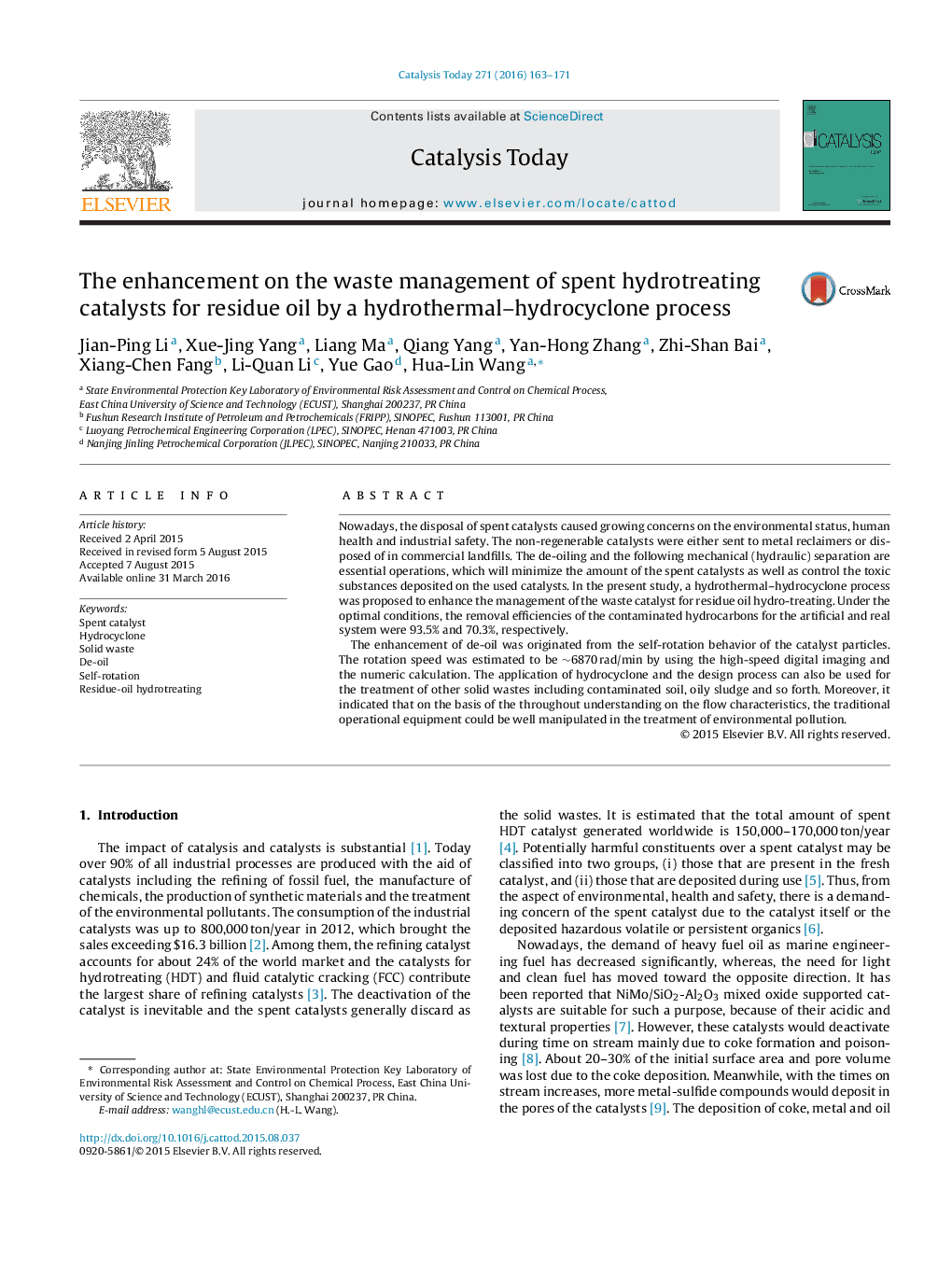| Article ID | Journal | Published Year | Pages | File Type |
|---|---|---|---|---|
| 53530 | Catalysis Today | 2016 | 9 Pages |
•The hydrothermal–hydrocyclone process was demonstrated to be an efficient treatment route for the management of the oily spent catalyst.•The application of hydrocyclone not only facilitates the separation of spent catalyst from washing liquid but also enhances the removal of surficial-adhesion hydrocarbons. A best removal efficiency was achieved as 93.5% under 95 °C with a LS ratio 50:1, agitation speed 300 rad/min.•Within the hydrocyclone separator, the catalyst particle was forced to self-rotation with high speed, 6700 rpm/s, which was contributed to the enhancement of de-oiling process.•It indicated that on the basis of the throughout understanding on the flow characteristics, the traditional operational equipment could be well manipulated in the treatment of environmental pollution.
Nowadays, the disposal of spent catalysts caused growing concerns on the environmental status, human health and industrial safety. The non-regenerable catalysts were either sent to metal reclaimers or disposed of in commercial landfills. The de-oiling and the following mechanical (hydraulic) separation are essential operations, which will minimize the amount of the spent catalysts as well as control the toxic substances deposited on the used catalysts. In the present study, a hydrothermal–hydrocyclone process was proposed to enhance the management of the waste catalyst for residue oil hydro-treating. Under the optimal conditions, the removal efficiencies of the contaminated hydrocarbons for the artificial and real system were 93.5% and 70.3%, respectively.The enhancement of de-oil was originated from the self-rotation behavior of the catalyst particles. The rotation speed was estimated to be ∼6870 rad/min by using the high-speed digital imaging and the numeric calculation. The application of hydrocyclone and the design process can also be used for the treatment of other solid wastes including contaminated soil, oily sludge and so forth. Moreover, it indicated that on the basis of the throughout understanding on the flow characteristics, the traditional operational equipment could be well manipulated in the treatment of environmental pollution.
Graphical abstractFigure optionsDownload full-size imageDownload high-quality image (153 K)Download as PowerPoint slide
